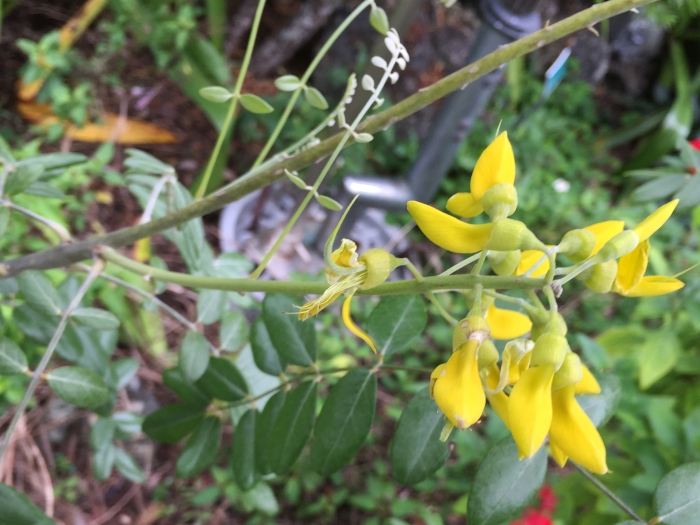Necklacepod
(Sophora tomentosa)
Necklacepod (Sophora tomentosa)
/
/

Judy Gallagher
CC BY-SA 4.0
Image By:
Judy Gallagher
Recorded By:
Copyright:
CC BY-SA 4.0
Copyright Notice:
Photo by: Judy Gallagher | License Type: CC BY-SA 4.0 | License URL: http://creativecommons.org/licenses/by-sa/4.0/ | Rights Holder: Judy Gallagher | Publisher: iNaturalist | Date Created: 2017-01-10T10:33:22-08:00 |

















Estimated Native Range
Summary
Sophora tomentosa, commonly known as necklacepod or yellow necklacepod, is a deciduous shrub or small tree native to coastal dunes, sandy shores, and mangrove edges in tropical and subtropical regions around the world, including parts of Florida, the Caribbean, Central and South America, Africa, Asia, and Australia. It typically grows 4 to 10 feet tall and wide, with a rounded form. The plant is adorned with compound leaves that are velvety due to fine hairs and bears showy clusters of yellow, pea-like flowers throughout the year, with peaks in spring and summer. These are followed by distinctive, beaded seed pods that resemble a necklace, hence the common name.
Necklacepod is valued for its tolerance to salt spray and drought, making it an excellent choice for coastal landscaping and xeriscaping. It is also used for erosion control and as a nectar source for pollinators such as bees, butterflies, and hummingbirds. In cultivation, it prefers full sun to partial shade, well-drained sandy soils, and can handle moderate watering, though it is drought-tolerant once established. There are no major disease or pest issues, but it can be sensitive to frost. In regions where it is not native, care should be taken as it can become invasive.CC BY-SA 4.0
Necklacepod is valued for its tolerance to salt spray and drought, making it an excellent choice for coastal landscaping and xeriscaping. It is also used for erosion control and as a nectar source for pollinators such as bees, butterflies, and hummingbirds. In cultivation, it prefers full sun to partial shade, well-drained sandy soils, and can handle moderate watering, though it is drought-tolerant once established. There are no major disease or pest issues, but it can be sensitive to frost. In regions where it is not native, care should be taken as it can become invasive.CC BY-SA 4.0
Plant Description
- Plant Type: Shrub, Tree
- Height: 6-10 feet
- Width: 8-12 feet
- Growth Rate: Moderate
- Flower Color: Yellow
- Flowering Season: Spring, Summer, Fall
- Leaf Retention: Evergreen
Growth Requirements
- Sun: Full Sun, Part Shade
- Water: Low, Medium
- Drainage: Fast, Medium
Common Uses
Butterfly Garden, Drought Tolerant, Low Maintenance, Salt Tolerant, Showy Flowers, Street Planting
Natural Habitat
Native to coastal dunes, sandy shores, and mangrove edges in tropical and subtropical regions globally
Other Names
Common Names: Iso-Fuji , Silver Bush , Rong Mao Huai , Seacoast Laburnum , Yellow Sophora , Strena Di Kantu Di Laman , Coast Sophora
Scientific Names: Sophora tomentosa , Sophora fometosa , Sophora tomentosa var. occidentalis , Sophora tometosa
GBIF Accepted Name: